Sablé Breton, (sob-lee breh-tone) is a classic, very buttery cookie coming from the Bretagne region (Britanny) in the North-West of France. The region is famous for its indulgent use of butter, in particular salted butter.
The word Sablé is French for sand and refers to the butter being incorporated into the flour. It actually feels sandy after mixing. The cross hatch design on top is the traditional finish.
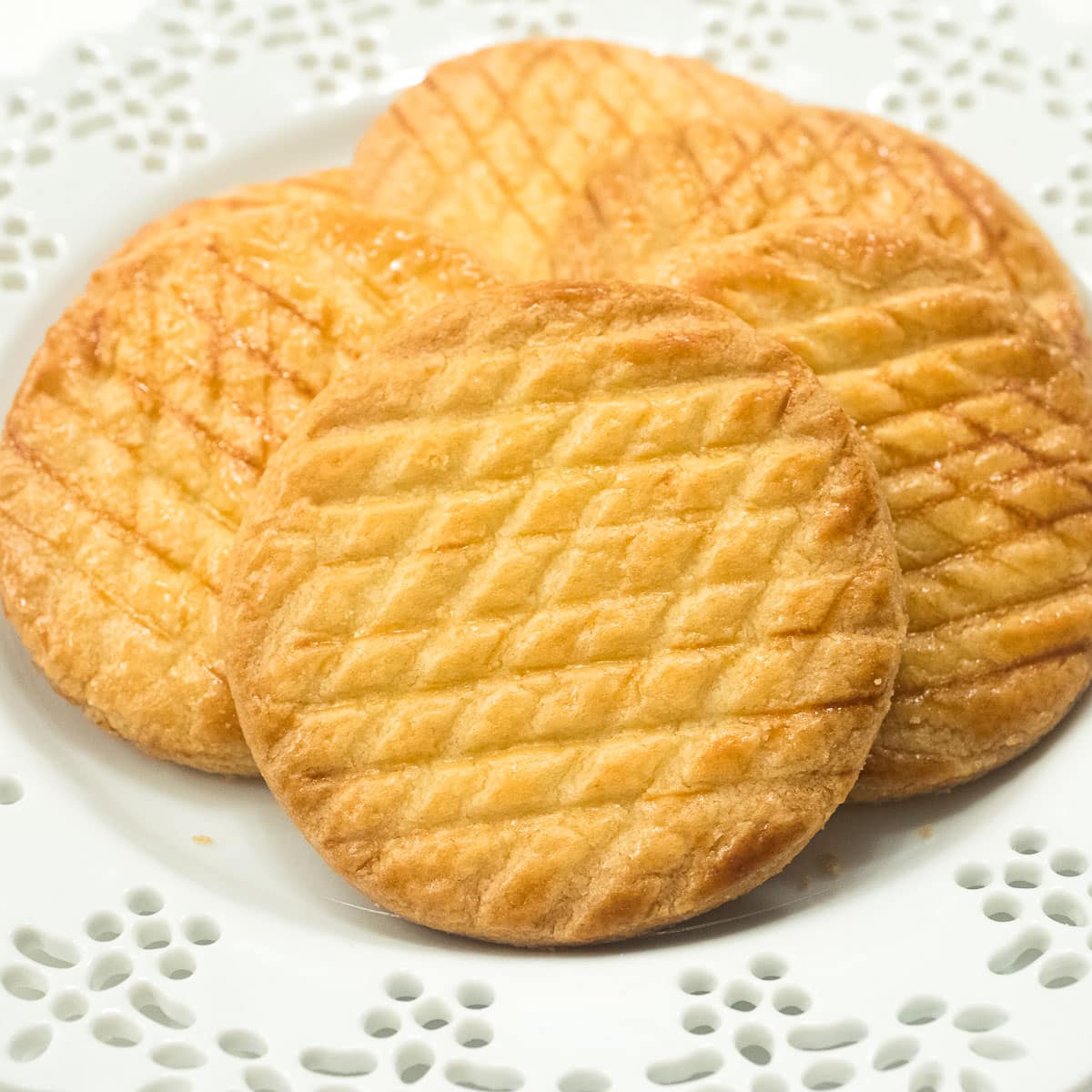
Don't mistake the simplicity of this cookie as just another butter cookie. The French make the best butter cookies, including Petit Beurre. Sablé Breton are another of their superb cookies that are in a class by themselves. There is another famous French dessert, Gateau Breton which uses a variation of this pastry.
Four ingredients make up the cookie with salted butter being the most important one and Brittany has the best sea salt as well as butter. "The history of salt works on the peninsula stretches back 2,700 years; Brittany’s “white gold” was a sought-after luxury product as early as Roman times" according to the Taste of France magazine.
These make a perfect holiday gift, especially since they can be made ahead and baked when needed.
For more information on baking great cookies, see my post Cookie Tips for the Best Cookies.
Jump to:
Why you want to make this cookie
- They are really easy to make with just 4 ingredients. How can you go wrong?
- These cookies can be made well in advance. Simply cut out the cookies, freeze, wrap and store in the freezer for up to 3 months.
- Sablé Breton are like no other butter cookie you'll ever eat. They are absolutely addictive. I can say that from personal experience.
- They're perfect with coffee or tea, as a snack or just because they are so good.
- They make an exquisite gift for someone special.
Variations
- Add a lemon or orange rind to the dough.
- A chocolate version can be made by removing ¼ cup of flour and substituting ¼ cup Dutch cocoa.
- Add ½ cup of any nut and process it along with the flour. Increase the egg yolks to 3.
- While these are usually served as single cookies, they can be sandwiched with jam, nutella, or buttercream.
- Any size cutter can be used.
Recipe Ingredients
Sablé Breton Dough
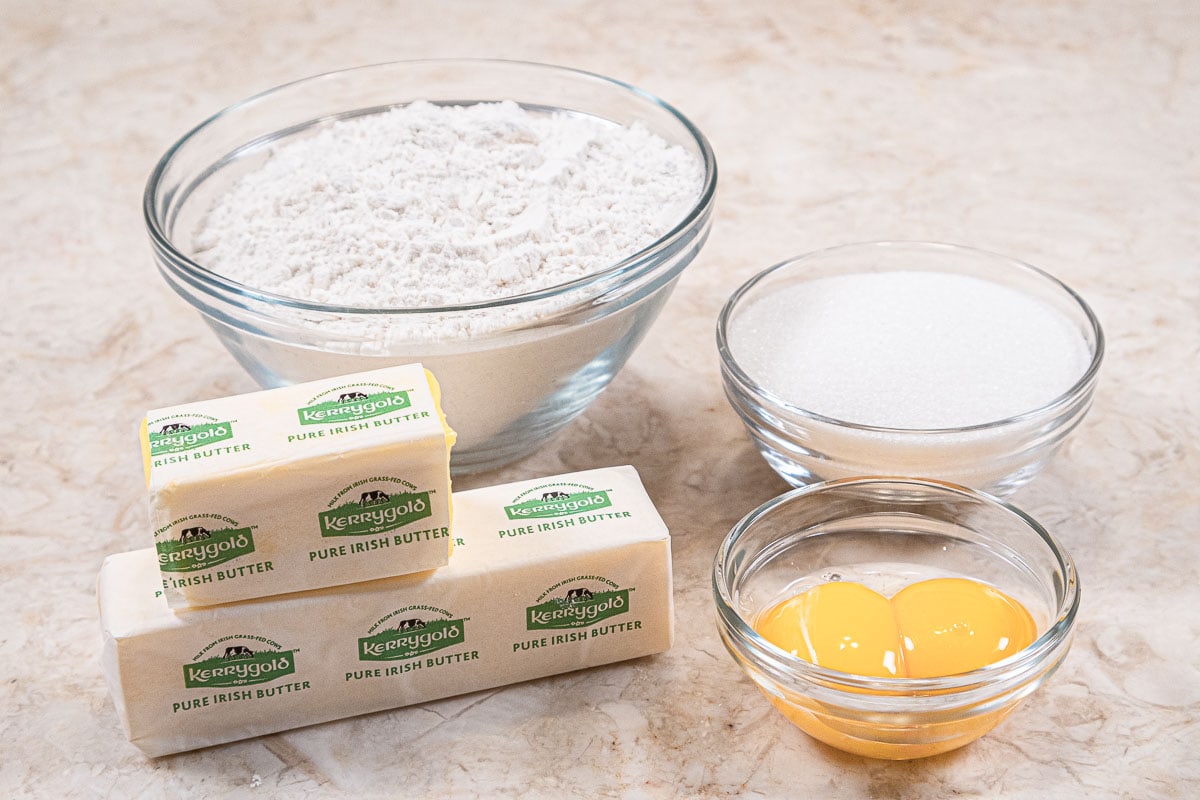
FRONT ROW: European Salted Butter, egg yolks
BACK ROW: All-purpose flour, granulated sugar
Egg Wash
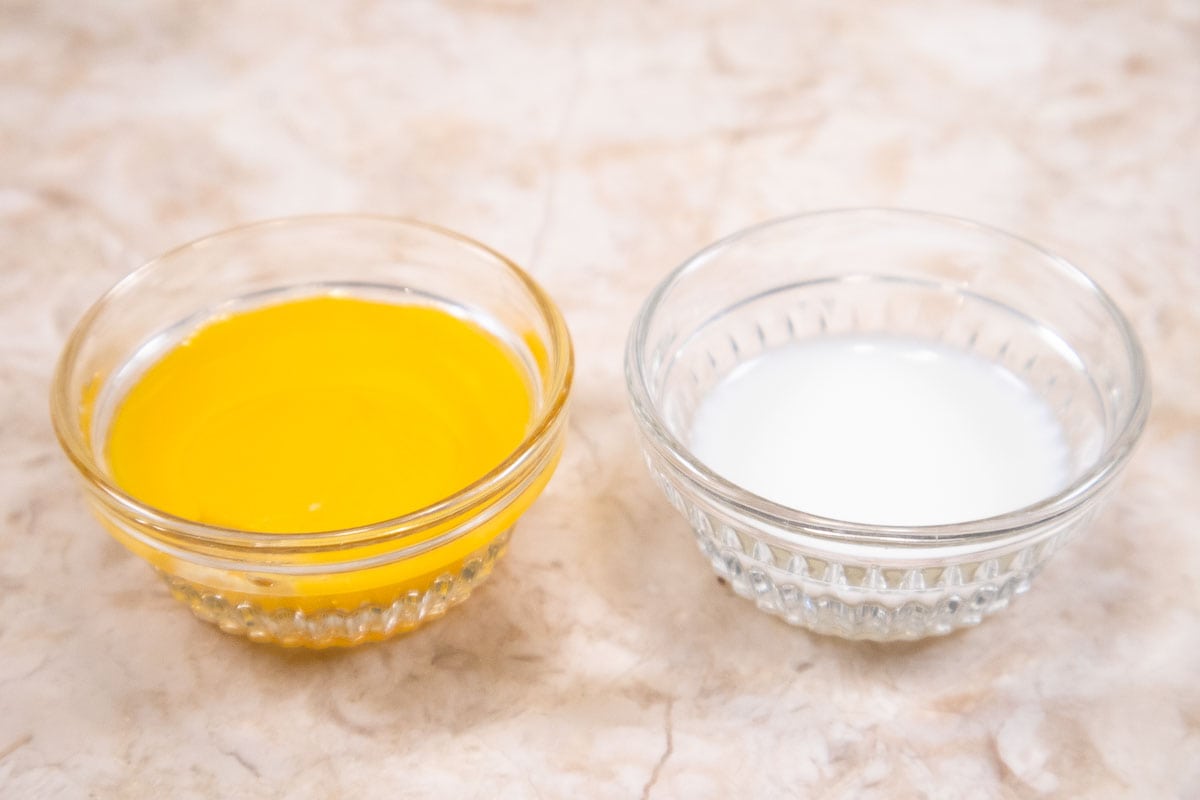
Egg Yolk, Milk
The butter I used is Kerrygold Salted Butter. It is a European butter that has a higher fat content (82%) which gives a richer taste and color to the cookie. However, it softens faster when rolling out but a quick trip to the refrigerator or freezer firms it up.
Granulated sugar is used for the sandy texture that is indicative of this cookie. I have seen recipes with powdered sugar but that defeats the sandiness of the cookies.
The egg yolks enrich the cookie and add color. They are essential to the texture.
The egg yolk and milk glaze adds shine and a pleasant glow to the cookie as well as being traditional.
Be sure to see the recipe card below for the exact ingredients & instructions.
Step by Step Instructions

Step 1. Kerrygold is just one of many European butters either imported or made in America. The bold package holds salted butter while the silver package is for unsalted.Step 2. Cut the butter into small pieces. The easiest way is to cut is legthnwise and crosswise into about 8 cuts. The butter has to be very cold before continuing. Step 3. Add the dry ingredients to the processor and place the cold butter over them. Step 4. Process until the butter is indistinguishable.

Step 5. Add the sugar to the processor. Step 6. Process to incorporate. Step 7. Add the egg yolks. Step 8. Process until the dough comes together. It does not have to form a ball. Pour the dough onto your work surface.

Step 9. Gather the dough together and form into a flat round. Step 10. Divide the dough in half to make it easier to roll out. Step 11. If the dough is really soft, chill until firmed up somewhat. Do not let it get hard. Roll one piece between wax paper. There is a great tutorial regarding rolling dough between wax paper and why I prefer this medium over others. You will find it in my post Cut Out Cookies Using the Wax PaperTechnique. Step 12. After chilling or freezing, cut the cookie out in the desired size. Leave them on the bottom sheet of wax paper and freeze them.
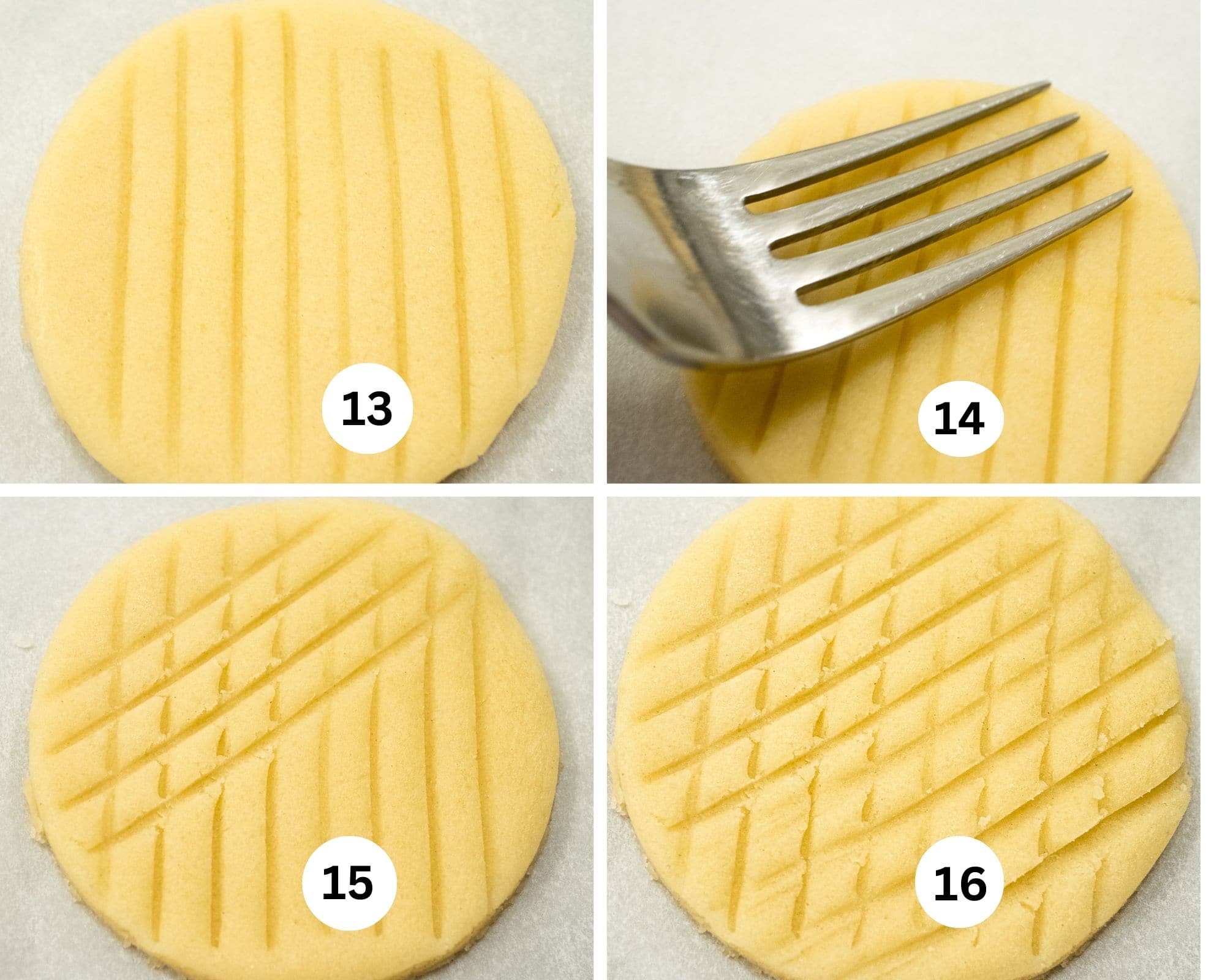
Step 13. Make vertical lines from the top to bottom of the cookie with the tines of a fork. Step 14. Draw diagonal lines across the vertical ones. Step 15. After the first set of lines is drawn, line the fork up leaving the appropriate amount of space and continue across the cookie. Step 16. The cookie should be chilled at this point. When ready to bake, combine the egg yolk and milk and brush each cookie.
Alternative Directions with a Mixer
The dough may be made in a mixer with a few changes. All the ingredients remain the same. However, the butter should be softened instead of refrigerated. Beat the sugar and butter until combined. Add the egg yolks, mixing in well. Add the flour, mixing on low. Shape into a flat round and chill if too soft to roll out. Continue as above, rolling between wax paper.
Recipe FAQ's
The word sablé means sandy in French. The word breton refers to Brittany, France's northwesternmost region. Breton shortbread literally means Sandy Cookies from Brittany.
The butter used is salted unlike most butter cookies that call for unsalted butter. The salt is an important ingredient as well as the butter. For authenticity the butter should be of the European type which has an 82% butterfat content vs. American type butters which are mandated to be at least 80% butterfat. The higher butterfat content makes the cookies even more buttery.
The cookies have a crisp and crumbly texture with an over the top buttery taste and a melt in your mouth quality that will have you reaching for more than one.
Expert Tips
- The butter should be refrigerator cold when adding it to the dry ingredients.
- To cut out the cookies, chill the dough until firm. Do not freeze. Roll between wax paper. Cut the cookies into the desired size.
- Without removing the cookies from the surrounding dough, freeze the whole thing keeping it on the bottom paper.
- Simply pop the cookies out. Bring the scraps together when thawed, re-roll and continue to make more cookies.
- The cross hatch design and brushing the cookies with the egg wash gives them the traditional Sablé Breton finish.
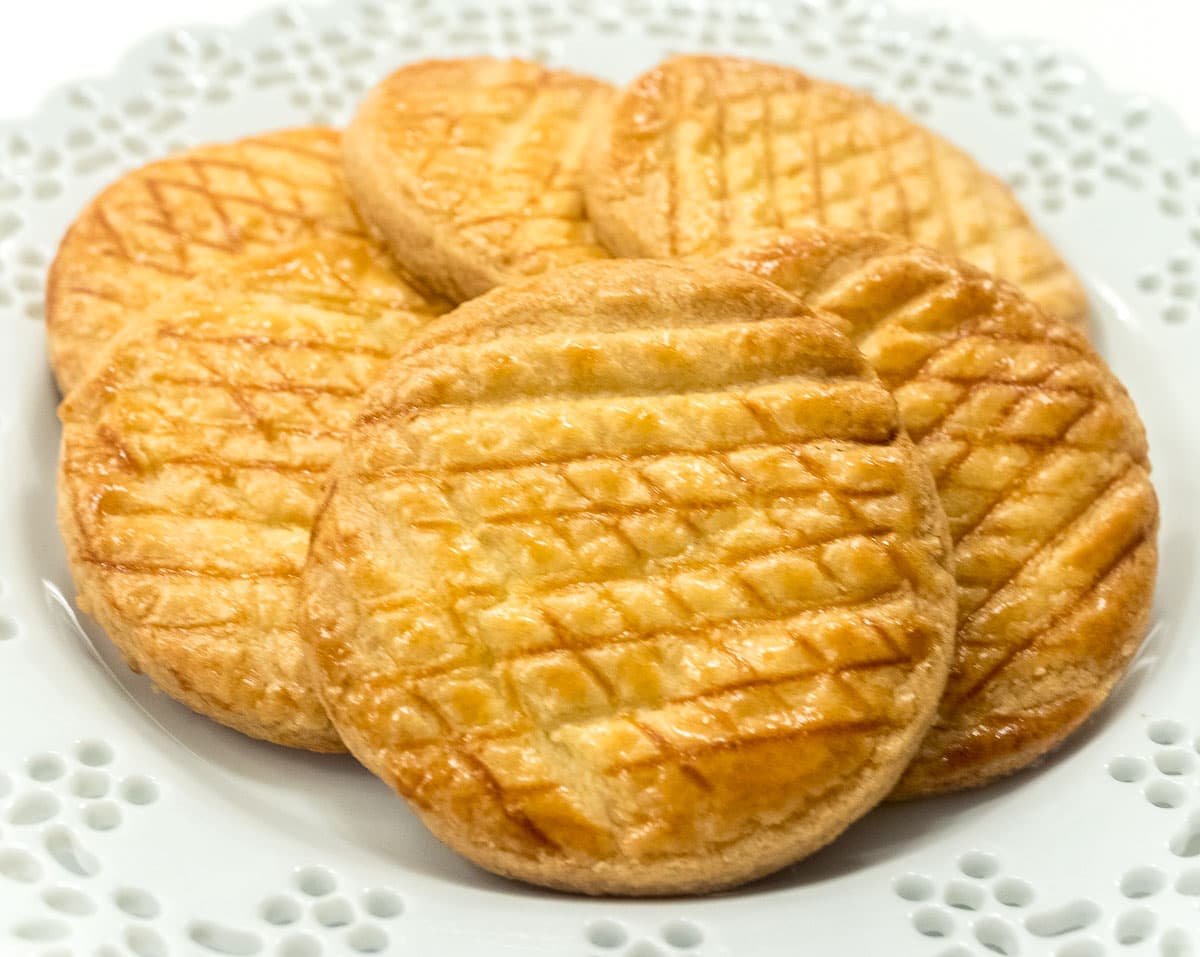
If you love these Sablé Breton or any other recipe on my website, please leave a 🌟 star rating in the recipe card and let me know how it went the in 📝 comments below. Thank you, I appreciate you being here.
Sablé Breton
Ingredients
Sablé Breton
- ¾ cup European style salted butter, cold (170 grams)
- 2 cups all-purpose flour (280 grams)
- ⅔ cup granulated sugar (130 grams)
- 2 egg yolks
Egg Glaze
- 1 egg yolk
- 1 teaspoon milk
Instructions
- If for any reason you cannot find or use European style butter, add ⅓ teaspoon salt to the flour and continue.
- Preheat the oven to 350°F. Line several baking sheets with parchment paper. Set aside.
- Cut the butter into small pieces as shown in the pictures above. Put it back in the refrigerator while prepping the remaining ingredients. It is important for it to be cold.
- Place the flour in a food processor. Pulse several times.
- Add the cold butter pieces and process until the butter is indistingushable.
- Add the sugar and process briefly to mix.
- Add the 2 egg yolks and process until the dough comes together. It may not form a ball and that's fine. Pour out onto a work surface and push it together. Form it into a flat round. The dough should be fine to continue but if it is too soft, refrigerate briefly to firm up. Do not let it get too hard or it will be difficut to roll.
- Divide the dough in half (about 300 grams each piece). Place one piece between two pieces of wax paper and roll to about ¼". For the cleanest edges, refrigerate or freeze briefly. Cut out rounds of the desired size. The cookies shown are 2 ½ inches. Do not remove the dough around the cookies.
- Place the cookies, still between the paper on a baking sheet and refrigerate or freeze until hard.
- Remove the top piece of paper and pop the cookies out. Place on the prepared baking sheets. With the back tines of a fork, mark the cookies vertically. Placing the fork on a diagonal, mark the cookies again, making small diamonds. (See photos).
- Combine the 1 egg yolk and milk. Brush the cookies. Bake for about 15 minutes until golden brown and set. Cool.
- The cookies can be stored in an airtight container for a week or 10 days.
- Alternatively, prepare the cookies, through marking them and freeze them unbaked. To bake, glaze them with the egg glaze and bake, allowing a few additional minutes in the oven.
To Make in a Mixer
- Soften the butter and place in the mixing bowl with the sugar. Beat until combined.
- Mix in the eggs.
- Add the flour and beat on low to bring everything together.
- Proceed as above, chilling the dough slightly if it is too soft to roll.


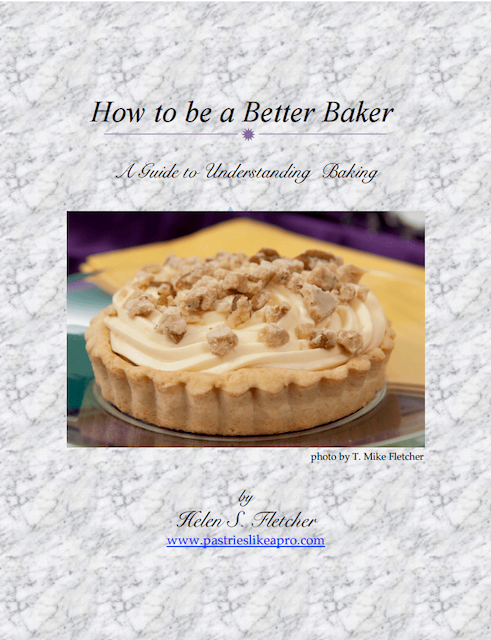
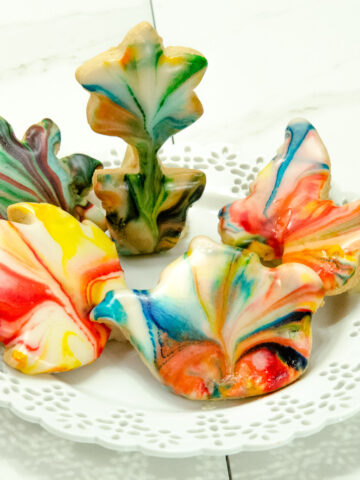
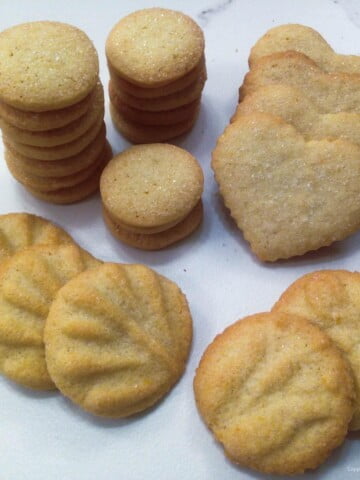
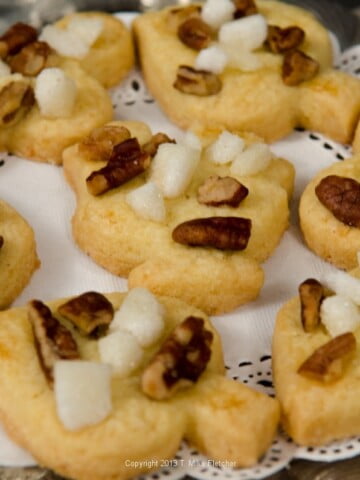
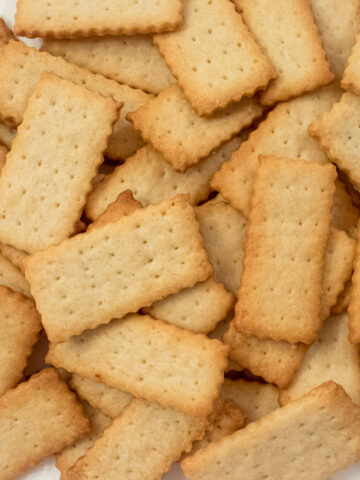
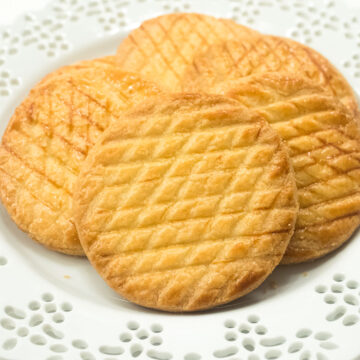

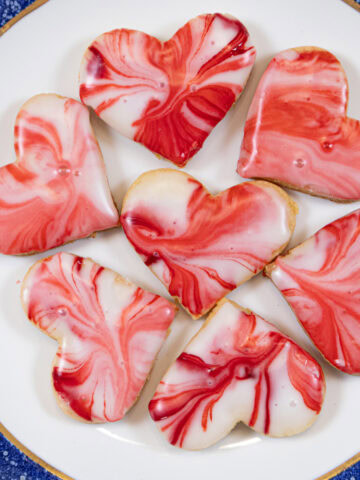
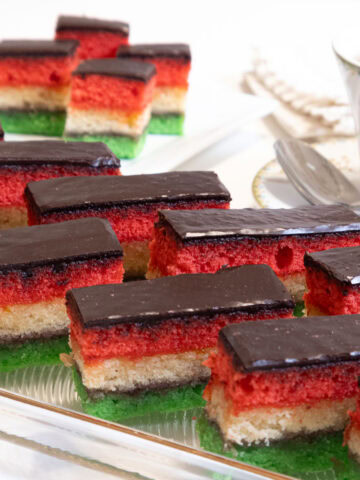
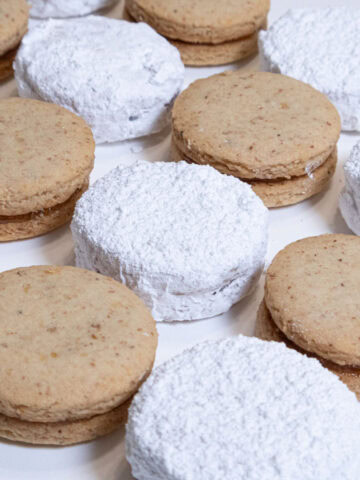
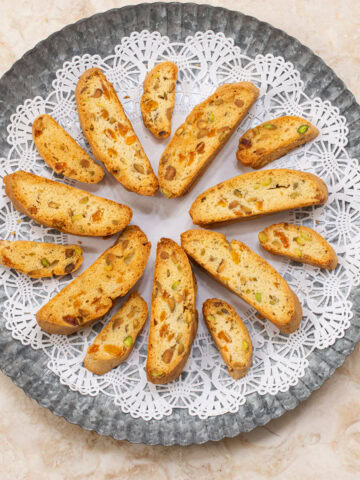
Lynn Huddleston says
Hi Helen, A quick line or two to let you know I tried making the Sable Breton biscuits tonight and your recipe was a great success! As I am in the UK, I used plain wheat flour and added 1 level teaspoon of baking powder to help keep the biscuits light. Also, in addition to the yolks of 2 extra large eggs I added 20g of egg white as the mix was a little dry. When the mix came together I rolled it into a log, wrapped it in greaseproof paper and chilled it for an hour before slicing into 1/4 inch slices, patterning the top and baking for 15 minutes at 180oC. A great result! Thanks for sharing. Best regards, Lynn.
Helen S Fletcher says
Hi Lynn - I love your resourcefulness. Thanks so much for letting me know. I like to hear how others are doing with the recipes.
Stefanie says
Made these - they are heavenly good. Thanks a lot for the recipe
Helen S Fletcher says
You're welcome.
Michelle says
These are divine! Your instructions are superb. To others reading this: If you follow everything Helen writes in her instructions and shows you in her pictures, you can't go wrong. My cookies turned out buttery and crisp with the cross hatch pattern. I used 84% fat sea salted butter know as "Cows Creamery Butter" here in Canada. Since butter is the star of this recipe, it's worth it to splurge on this ingredient. Thank you Helen! @michelleboatbaker on IG
Helen S Fletcher says
Thank you Michelle! This is such a simple cookie with a few ingredients that is outstanding in taste. So happy you made and enjoy it.
PJ Jones says
Everyone loved these cookies. SImple to make. The only problem I had was trying to get the fork to make the lines on the top of the cookies. The dough kept sticking to the fork. Maybe the dough was not cold enough? I may try spraying the fork with a non stick spray next time. I will surely make these again.
Helen S Fletcher says
Hi PJ - you were correct. Step 12 of the pictures tells you to freeze the cookies and the directions say to refrigerate or freeze until hard. There is so much butter in these cookies that they will soften quickly. I always freeze to give me some extra time. I wouldn't spray - just make sure they are rock hard. These are definitely one of my favs.
Kim says
Helen how does this butter cookie differ from a Scottish shortbread?
Helen S Fletcher says
Hi Kim, Scottish Shortbread, indeed all shortbreads I know of, have no eggs or yolks. They are mainly flour, butter and sugar.
Susan Brooks says
These little cookies are sublime. In my opinion, it is very important to use the European butter for this recipe (I used Kerrygold). Yum!
Helen S Fletcher says
Hi Susan, I agree. This is exactly the place for it.
Liz says
These are great little cookies. Highly recommended. I will gently tease you on your pronunciation of sablé breton, though. To avoid sounding like you're drunk on the local cider, it's 'sa-blay' (sa ryhmes with ha), and bruh-ton (tong without the g). :)
Helen S Fletcher says
Hi Liz, Thanks for the comment. For some reason there doesn't seem to be phonetic spellings anymore - only pronunciation. The French teacher who always helped me is, sadly, not here anymore so what I heard is what is on the post. I have also heard some really incorrect pronunciations on google. The worse was Pithiviers.